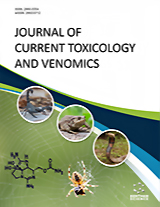Abstract
Background: In India and other tropical nations, snake bites are a serious public health issue that anti-snake venom may effectively treat.
Case Presentation: The case report described here details the antivenom received to neutralize the toxins present in Russell’s viper venom, followed by Ayurveda treatment to remove the surgical wound and reduce joint stiffness by applying Ayurvedic paste prepared by Laportea aestuans (L.). The leaves, garlic, pepper, and lemon juice mixture was applied to the affected area twice daily for 10 days. Another thin paste consisting of Laportea aestuans (L.) leaves, Centella asiatica (L.), garlic, pepper, and lemon juice was applied every 30 minutes for 10 days. A dried medicated paste was prepared by heating coconut oil and dried neem tree peel and applied to the wound. The patient was also given a decoction of Randia dumetorum (Retz.) Poir nut extracted with milk to flush out the venom.
Conclusion: The present results suggest combining conventional allopathic treatment to heal the surgical wound and Ayurvedic treatments to manage the symptoms of a juvenile Russell's viper bite as effective.
[http://dx.doi.org/10.1016/0035-9203(89)90311-8] [PMID: 2533418]
[http://dx.doi.org/10.1371/journal.pntd.0009242] [PMID: 33764978]
[http://dx.doi.org/10.1371/journal.pmed.0050218] [PMID: 18986210]
[http://dx.doi.org/10.1016/j.toxicon.2018.05.009] [PMID: 29782952]
[http://dx.doi.org/10.1371/journal.pntd.0009247] [PMID: 33764996]
[http://dx.doi.org/10.1016/S0035-9203(02)90250-6] [PMID: 11926002]
[http://dx.doi.org/10.1067/mem.2001.113372] [PMID: 11174237]
[http://dx.doi.org/10.1016/j.jprot.2011.05.027] [PMID: 21640209]
[http://dx.doi.org/10.1097/GOX.0000000000003506] [PMID: 33936914]
[http://dx.doi.org/10.4266/acc.2019.00591] [PMID: 31743633]
[http://dx.doi.org/10.1016/j.imr.2017.03.001] [PMID: 28664135]
[PMID: 24056555]
[http://dx.doi.org/10.1016/j.jaim.2016.11.001] [PMID: 28318812]
[http://dx.doi.org/10.3390/toxins14120817] [PMID: 36548714]









